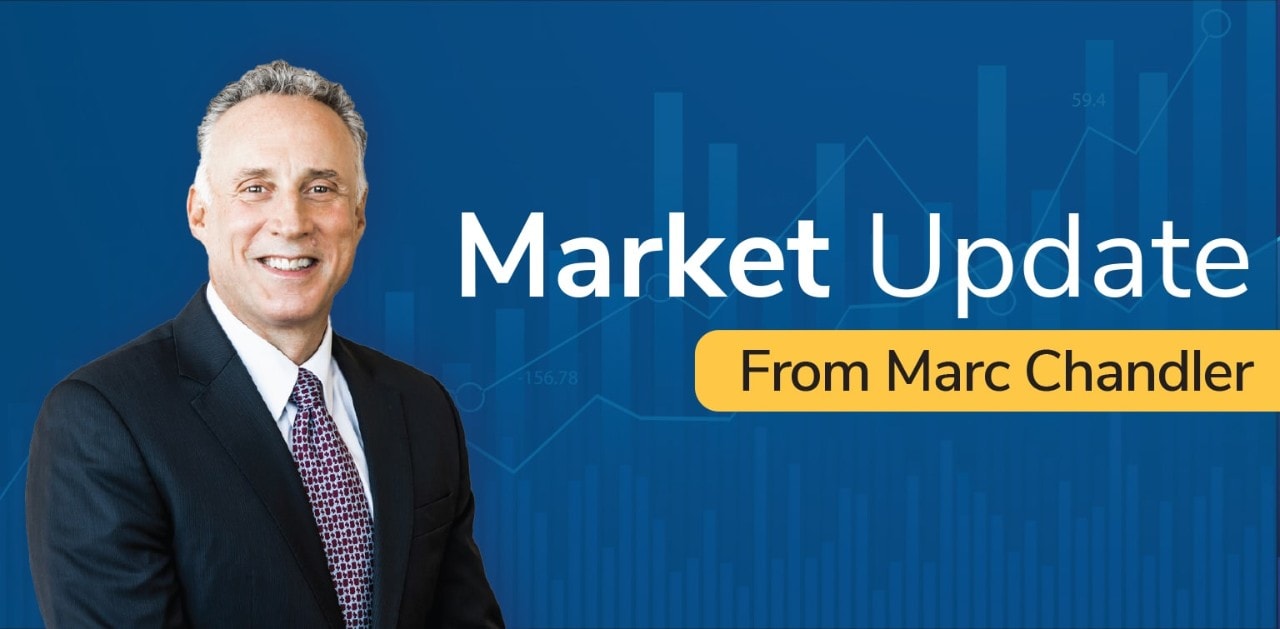

Market Update, February 2024
Insights from Marc Chandler, Managing Director and Chief Market Strategist, Bannockburn Global Forex, a First Financial company.
Rarely are officials able to achieve the proverbial economic soft-landing when higher interest rates help cool price pressures without triggering a significant rise in unemployment or a contraction. Yet, without declaring victory, the Federal Reserve seems to have higher confidence that this will be achieved.
A combination of stronger than expected US economic data and guidance by Federal Reserve officials have encouraged the market to temper its pessimism. Late last year, the market had the first interest rate cut fully priced in for March this year, and 170 bp of cuts were expected for all this year. The two-year Treasury yield fell more than 100 bp from mid-October 2023 to the middle of last month. Long-term interest rates, including mortgage rates fell.
The decline in interest rates, in turn, helped lift the stock market. The S&P 500 rallied 11.25% in Q4 23, its best quarterly performance in three years. Much focus is on the narrow breadth of the market, as the Magnificent 7 (Apple, Amazon, Nvidia, Tesla, Microsoft, Meta, and Alphabet), which has replaced the FANG (Facebook, Amazon, Apple, Netflix, and Google), lead the way. Yet, the Russell 2000, which is an index of the shares of the 2000 smallest companies, gained 13.5% in Q4 23.
Falling interest rates knocked a leg out from the under the dollar. The greenback fell against all the major currencies in Q4 23. JP Morgan’s Emerging Market Currency Index had its best quarter of the year, rising 2.35% against the dollar in the last three months of 2023.
As is common in the capital markets, the pendulum of sentiment swings hard in both directions. The market exaggerated the pace and extent of US rate cuts this year. In the first few weeks of the year, the pendulum has swung back. The two-year Treasury yield rose about 30 bp from the mid-January low. The market has pushed back the first Fed cut to May. It has also reduced the extent of this year’s easing to 125 bp from around 160 bp at the end of last year.
Paradoxically, equities have continued to rally. The S&P 500 and NASDAQ have set new record highs, though the Russell 2000 is lagging. Lower interest rate expectations were previously cited by the bulls, and now the idea that economic activity may be stronger seems to have inflamed the animal spirits.
The first estimate for Q4 23 GDP was 3.3% at an annualized rate. Most economists had expected something closer to 2%. Moreover, the strong pace was achieved with moderating price pressures. The GDP deflator was halved to 1.5% (from 3.3%). Also, unit labor costs, which are a key competitive metric combining labor compensation and productivity, fell in H2 23. To say the same thing, productivity gains more than offset the increase in wages/salaries and benefits.
The economy appears off to a strong start in the new year. In early February, the government reported that the economy grew over 350k jobs in January, which was nearly twice what economists expected. In the three months through January, US businesses added almost 750k jobs, the most in a three-month period since September-November 2022.
Not only were there more people working, but they were getting paid more. Average hourly earnings rose by 0.6% in January. That was twice as much as economists expected and the most in two years. The year-over-year rate stood at 4.5%. It continues to exceed the Consumer Price Index, which helps underpin demand.
The strength of the consumer is a key factor that helped avoid a recession that looked likely. Government deficit spending is arguably another crucial factor. The US budget deficit was around 6.5% of GDP last year. Some funds, such as within the Chips Act provisions, are slowly being distributed. More actual spending is in the pipeline.
The US deficit was twice the size of the Eurozone’s (3.3%), and larger than the UK’s (4.5%), Japan’s (5.2%), and Canada’s (1.2%) budget shortfalls. Projecting this year’s deficit requires making numerous assumptions, but many economists expect the deficit to be around 6% of GDP. That may still be twice as high as the Eurozone’s and higher than most others.
The Eurozone and UK are experiencing economic stagnation, and this looks likely to persist through most of the year. Inflation in both areas is likely to fall sharply in the coming months and this will allow the central banks to begin cutting interest rates. Japanese inflation is also falling, and the core rate may fall below the 2% target in the coming months, but the Bank of Japan is expected to raise its overnight interest rate from below zero (-0.10%) in April.
China’s economy is underperforming Beijing’s expectations and there are promises of more supportive measures. At the same time, what China does appear to be doing well—like EV and battery production, solar panels, and processed rare earths—threatens its trading partners. An index of the 300 largest stocks on the Shanghai and Shenzhen exchange fell to five-year lows in early February.
Weak economic impulses and the elevated geopolitical tensions make for a poor international backdrop. The US economic momentum appears sufficient to shrug it off in the near-term. However, the economy will likely slow as the year progresses, allowing the Federal Reserve to feel more confident that inflation is well on its way to the 2% target and begin cutting interest rates in May or June.
At first, interest rate cuts may be explained not so much as easing policy as maintaining the same level of restraint as inflation falls. In effect, without a cut in the nominal interest rate, the real interest rate, which adjusts for inflation, would be continuing to rise. It is the real rate, economist argue, that is the key signal for businesses, investors, and policymakers. Later, as growth slips below 2%, the rate cuts will begin providing more monetary support to the economy, as the Fed seeks to secure a rare soft-landing.
Geopolitical tensions remain elevated, but direct impact on the US economy seems minimal. Shipping costs have risen, especially between Europe and Asia. Oil prices have become more volatile, but net-net has risen slightly since the end of last year. The average retail price of gasoline is also little changed at the start of the year, after falling nearly 20% in the last four months of 2024.
Lastly, we note that three regularities have occurred during presidential election years. First, in the past 18 presidential cycles, going back to 1952, the economy has contracted twice (1980 and 2020). Second, the S&P 500 has fallen three times (1960, 2000, and 2008). Third, the Dollar Index (DXY), a basket of leading currencies, has mostly risen in the dozen presidential election years since the end of Bretton Woods. The record was perfect from 1976 through 2000. However, in the five elections since, the Dollar Index has fallen three times (2004, 2012, and 2020).
By understanding past market patterns and studying current trends, you can continue to make strategic investments. Reach out to First Financial for market advice most relevant to your needs.
